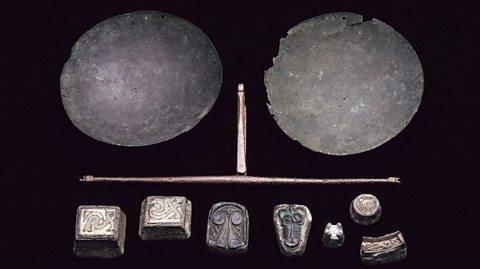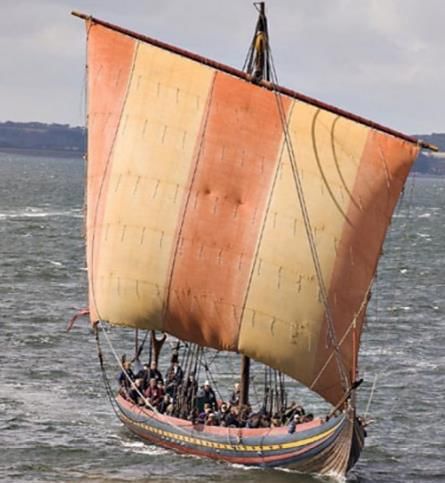Year 6 Exam > Year 6 Notes > History for Year 6 > Viking Traders and Explorers
Viking Traders and Explorers | History for Year 6 PDF Download
| Table of contents |

|
| Where did the Vikings explore? |

|
| What did the Vikings trade? |

|
| How did they find their way? |

|
| How do we know about longships? |

|
Where did the Vikings explore?
- The Vikings were remarkable explorers and navigators, with their ships reaching various regions including Britain, France, Spain, Italy, and North Africa.
- They also engaged in extensive trade routes across land, traveling through Russia and reaching as far south as Constantinople in present-day Turkey.
- Some Vikings ventured even further east, reaching Baghdad in Iraq.
- A few adventurous explorers made significant voyages to Iceland and beyond, crossing the Atlantic Ocean to reach North America.
- Notable figures such as Leif Erikson explored areas like Newfoundland in modern Canada, while Eric the Red is known for his travels to Greenland.
What did the Vikings trade?
- The Vikings were active traders throughout Europe and even into Central Asia.
- They acquired a wide variety of goods such as silver, silk, spices, wine, jewelry, glass, and pottery.

- In exchange, they sold items such as honey, tin, wheat, wool, wood, iron, fur, leather, fish, and walrus ivory.
- Throughout their travels, the Vikings also engaged in the slave trade.
- To facilitate their trading activities, Viking merchants carried folding scales to weigh coins accurately and ensure fair transactions.
How did they find their way?
- The Vikings did not rely on maps for navigation. Instead, they preferred to sail close to the coastline, using visible landmarks for guidance.
- When out of sight of land, they observed the position of the sun. If the sun set to the west, it indicated they were heading toward England, while sunrise to the east meant they were returning to Denmark or Norway.
- The Vikings developed a type of device known as a sun-shadow board or sundial to aid in navigation. At night, they looked to the stars to determine their direction.
- They possessed extensive knowledge about winds and sea currents. Experienced sailors could even gauge the proximity of land by observing bird activity or the color of the water.
How do we know about longships?
Despite wood decaying and metal rusting after centuries, some remnants provide insights into what Viking ships were like.
- Two significant Viking ships have been discovered by archaeologists on farms in Norway.
- The Gokstad ship, excavated in 1880, and the Oseberg ship, found in 1904, were both interred in Viking funerals between AD 800 and 900.
- The Gokstad ship measures 23 meters in length, making it the largest Viking ship ever unearthed, capable of accommodating 32 oarsmen with 16 oars on each side.
- These remarkable ships are currently housed in a museum in Oslo, Norway.

The document Viking Traders and Explorers | History for Year 6 is a part of the Year 6 Course History for Year 6.
All you need of Year 6 at this link: Year 6
|
3 videos|69 docs
|
FAQs on Viking Traders and Explorers - History for Year 6
| 1. Who were the Vikings and where did they come from? |  |
Ans. The Vikings were seafaring people from the Scandinavian regions of Norway, Denmark, and Sweden. They lived during the late 8th to early 11th centuries and are known for their raids, trading, and exploration across Europe and beyond.
| 2. What was life like for the Anglo-Saxons during the Viking Age? |  |
Ans. Life for the Anglo-Saxons during the Viking Age was marked by conflict, as they faced invasions and settlements from the Vikings. Many Anglo-Saxons lived in small villages, farming and engaging in trade. The threat of Viking raids influenced their society, leading to fortifications and changes in leadership.
| 3. How did the Vikings conduct their raids and battles? |  |
Ans. Vikings were known for their swift and surprise attacks. They used longships that allowed them to navigate rivers and reach inland locations quickly. In battle, they employed strategies such as shield walls and were skilled in hand-to-hand combat, often using axes, swords, and spears.
| 4. What were the main contributions of the Vikings to trade and exploration? |  |
Ans. The Vikings were exceptional traders and explorers. They established trade routes that connected Europe with Asia and the Middle East. They traded goods such as furs, timber, and silver. Vikings also explored new territories, including parts of North America, and founded settlements in places like Iceland and Greenland.
| 5. What ultimately happened to the Viking influence in Britain? |  |
Ans. The Viking influence in Britain diminished over time due to various factors, including the establishment of the Danelaw, where Viking laws were recognized, and the eventual unification of England under strong leaders. By the end of the 11th century, Viking raids had largely ceased as the kingdoms became more organized and resistant.
Related Searches




















